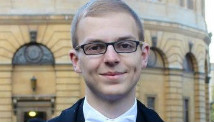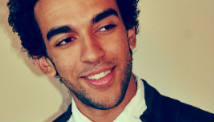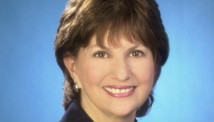NEW DELHI/SINGAPORE (Reuters) - A woman whose gang rape sparked protests and a national debate about violence against women in India died of her injuries on Saturday, prompting a security lockdown in New Delhi and an acknowledgement from India's prime minister that social change is needed.
The six suspects held in connection with the December 16 attack on the 23-year-old medical student on a New Delhi bus were charged with murder following her death, police said. The maximum penalty for murder is death.
Earlier, bracing for a new wave of protests, Indian authorities deployed thousands of policemen, closed 10 metro stations and banned vehicles from some main roads in the heart of New Delhi, where demonstrators have converged since the attack to demand improved women's rights.
Despite efforts to cordon off the city centre, more than 1,000 people gathered for peaceful protests at two locations. Some protesters shouted for justice, others for the death penalty for the rapists.
The woman severely beaten, raped and thrown out of a moving bus, had been flown to Singapore in a critical condition by the Indian government on Thursday for treatment.
The intense media coverage of the attack and the use of social media to galvanize protests, mostly by young middle-class students, has forced political leaders to confront some uncomfortable truths about the treatment of women in the world's largest democracy.
Most sex crimes in India go unreported, many offenders go unpunished, and the wheels of justice turn slowly, according to social activists who say that successive governments have done little to ensure the safety of women.
"The need of the hour is a dispassionate debate and inquiry into the critical changes that are required in societal attitudes," Prime Minister Manmohan Singh said in a statement.
"I hope that the entire political class and civil society will set aside narrow sectional interests and agenda to help us all reach the end that we all desire - making India a demonstrably better and safer place for women to live in."
Hundreds of protesters took to the streets in the northern Indian city of Lucknow. In Hyderabad, in southern India, a group of women marched to demand severe punishment for the rapists. Protests were also held in the cities of Chennai, Kolkata and Mumbai.
The demonstrations were peaceful, unlike last weekend, when police used batons, water cannon and teargas in clashes with protesters.
Sonia Gandhi, the powerful leader of the ruling Congress party, directly addressed the protesters in a rare broadcast on state television, saying that as a mother and a woman she understood their grievances.
"Your voice has been heard," Gandhi said. "It deepens our determination to battle the pervasive and the shameful social attitudes that allow men to rape and molest women with such impunity."
The Indian government has chartered an aircraft to fly the student's body back to India on Saturday, along with members of her family, T.C.A. Raghavan, the Indian high commissioner to Singapore, told reporters.
The body was taken to a Hindu casket firm in Singapore for embalming. Indian diplomats selected a gold and yellow coffin to transport her home, staff at the firm told reporters.
"She was courageous in fighting for her life for so long against the odds but the trauma to her body was too severe for her to overcome," Kelvin Loh, chief executive officer of the Mount Elizabeth Hospital in Singapore said in a statement announcing her death from multiple organ failure.
The victim and a male friend were returning home from the cinema by bus when, media reports say, six men on the bus beat them with metal rods and repeatedly raped the woman. Media said a rod was used in the rape, causing internal injuries. Both were thrown from the bus. The male friend survived.
Six suspects, from a slum in south Delhi, are in custody.
The attack has put gender issues centre stage in Indian politics arguably for the first time. Issues such as rape, dowry-related deaths and female infanticide have rarely entered mainstream political discourse.
Analysts say the death of the woman dubbed "Amanat", an Urdu word meaning "treasure," by some media could change that, although it is too early to say whether the protesters calling for government action to better safeguard women can sustain their momentum through to national elections due in 2014.
WORST PLACE
The outcry over the attack caught the government off-guard and it was slow to reach. It took a week for Singh to make a statement on the attack, infuriating many protesters who saw it as a sign of a government insensitive to the plight of women.
The prime minister, a stiff 80-year-old technocrat who speaks in a low monotone, has struggled to channel the popular outrage in his public statements and convince critics that his eight-year-old government will now take concrete steps to improve the safety of women.
"The Congress managers were ham-handed in their handling of the situation that arose after the brutal assault on the girl. The crowd management was poor," a lawmaker from Singh's ruling Congress party said on condition of anonymity.
Commentators and sociologists say the rape has tapped into a deep well of frustration many Indians feel over what they see as weak governance and poor leadership on social issues.
A global poll by the Thomson Reuters Foundation in June found that India was the worst place to be a woman because of high rates of infanticide, child marriage and slavery.
New Delhi has the highest number of sex crimes among India's major cities, with a rape reported on average every 18 hours, according to police figures. Government data show the number of reported rape cases in the country rose by nearly 17 percent between 2007 and 2011.
(Additional reporting by Devidutta Tripathy, Satarupa Bhattacharjya, Diksha Madhok, Shashank Chouhan and Suchitra Mohanty in Delhi, Sharat Pradhan in Lucknow, Sujoy Dhar in Kolkata, Anupama Chandrasekaran in Chennai, Kevin Lim, Saeed Azhar, Edgar Su and Sanjeev Miglani in Singapore; Editing by Mark Bendeich and Robert Birsel)




